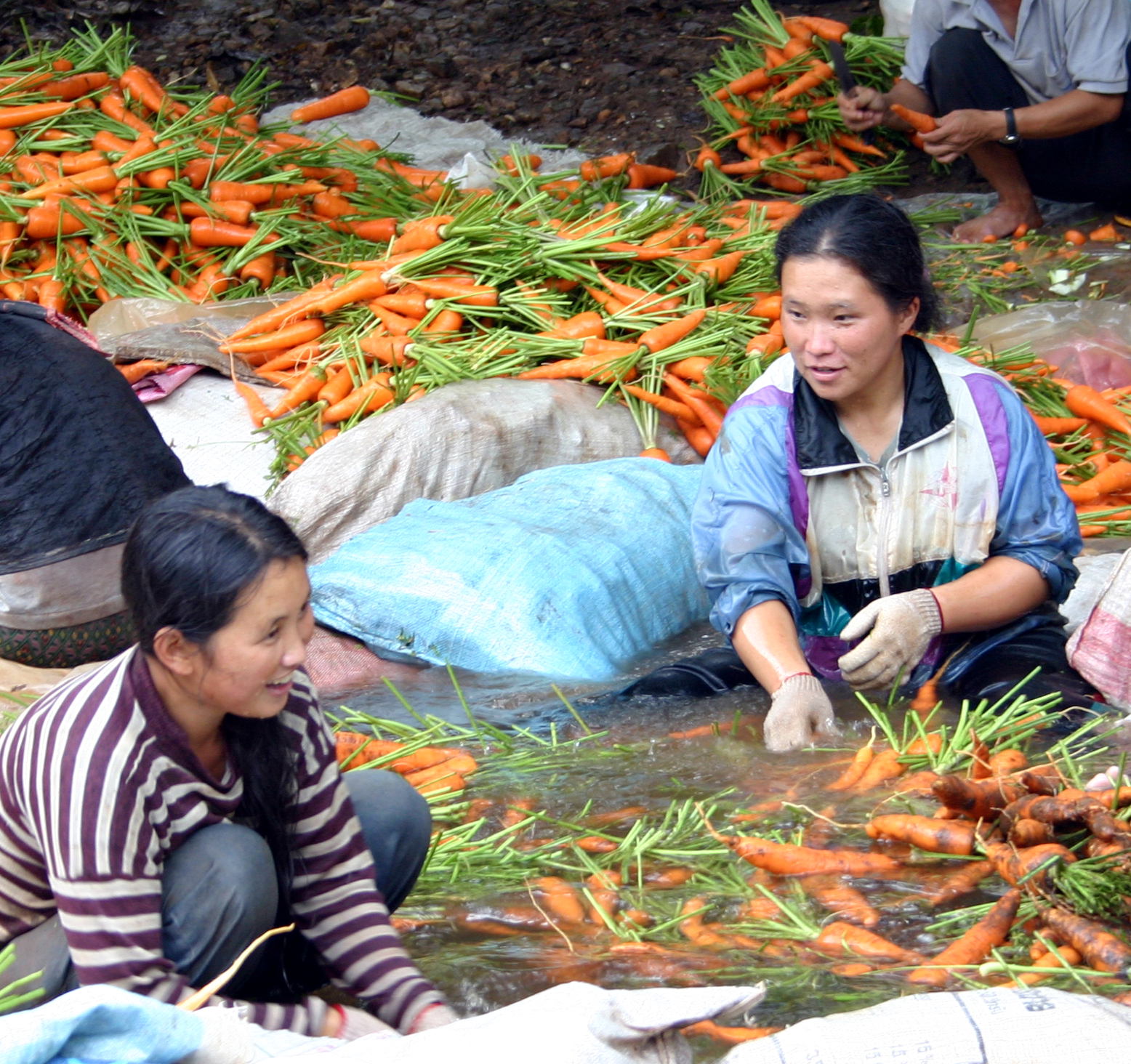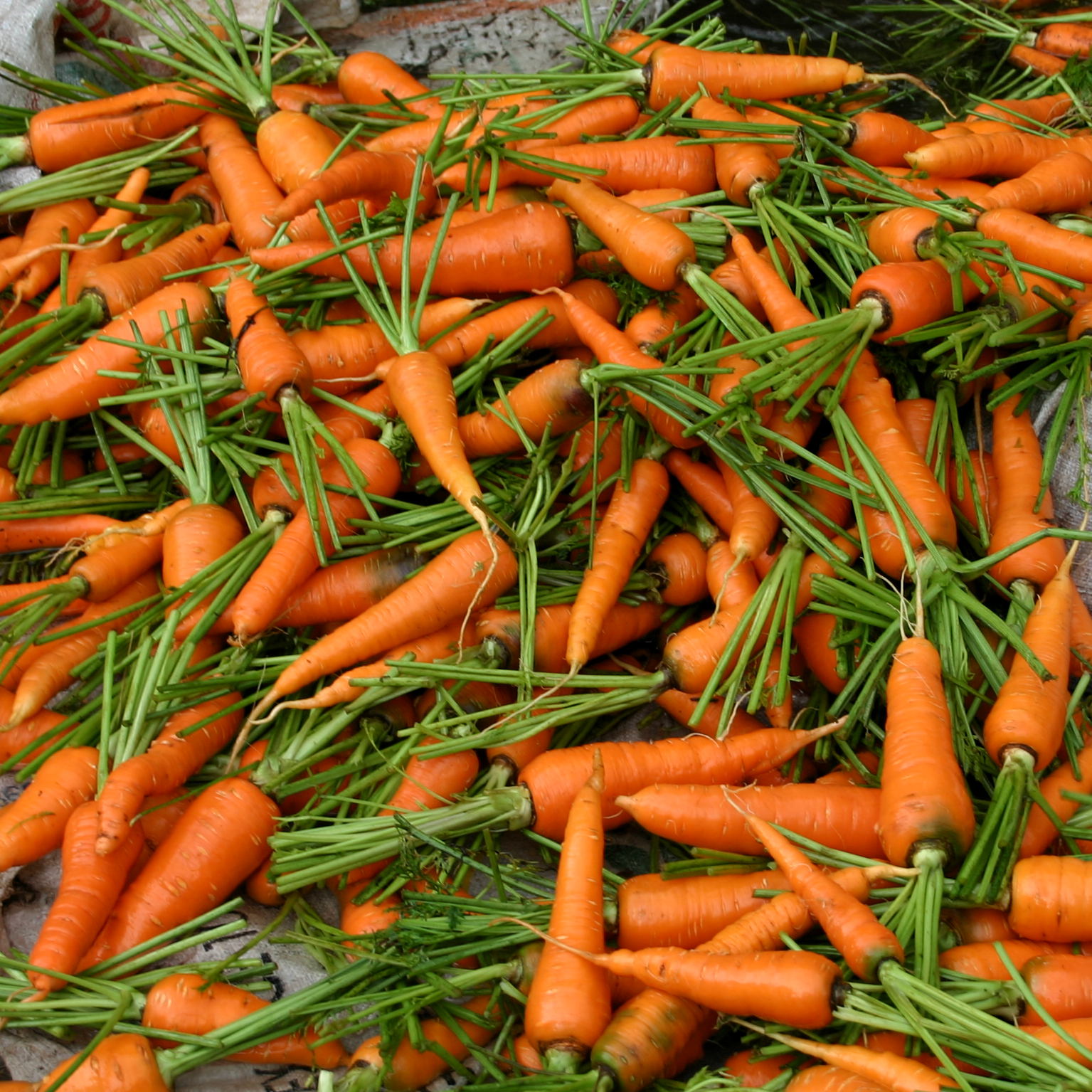Carrots were a rather rare sight when I first came to Thailand many years ago. There were usually just a few slices thrown into mixed vegetable stir-fries for color. Over the years, it seems that they have become more common, and that’s probably due to them becoming more readily available. The increasing availability is no doubt due to the efforts of His Majesty the King of Thailand, through his Royal Projects foundation. This point was driven home when we encountered a group of Meo villagers washing huge mounds of freshly harvested carrots on the side of a mountain road one day.

The villagers had temporarily damned a small stream running off the mountain to form several small pools on the side of the road. They were using the pools – literally sitting in them as you can see – to wash the carrots before taking them to market. The carrots would probably be on sale in the Muang Mai wholesale market in Chiang Mai before nightfall.
Carrots are one of many products introduced by the Royal Projects to help eliminate the need for the Meo to rely on their traditional cash crop: opium. During a tour of the north in the late 1950s the then young king was dismayed to see opium fields covering the hillsides of the north. He resolved to find a better way for his subject to make a living, and thus the Royal Projects was born. The foundation works to find crops suitable for growing in the hills that will create a sustainable income for the hill tribes. In addition to carrots, the foundation has funded research and development to find or develop crop strains for coffee, macadamia nuts and many other cash crops.

Carrots apparently originated in middle Asia, around what is now known as Afghanistan. Originally, carrots came in a rainbow of colors, including white, yellow, purple, red, green and black. It seems they came in just about every color except the orange we know today. The orange shade only came about in the 16th century, when it was developed by patriotic Dutch growers to pay tribute to the House of Orange.
Although the motive may have been patriotism, the result was highly nutritious. The orange color is the result of high levels of carotene, which the body converts to vitamin A. No other fruit or vegetable contains as much carotene. Carrots also contain a special pectin fiber that is thought to help reduce cholesterol. One other curious thing about carrots is that, unlike most other vegetables, carrots are more nutritious when eaten cooked rather than raw.